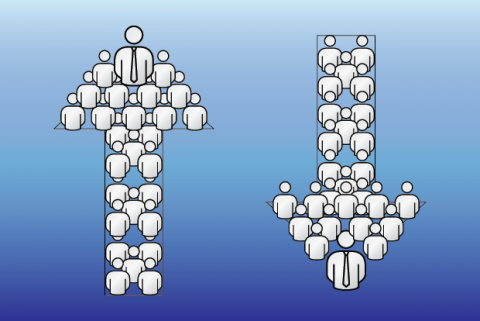One of the luxuries of being an IT leader is you get to work in one of the most collaborative business functions in an organization.
During my 25 years at GE, I worked in practically every function, and it’s through that lens that I can say it’s remarkable how collaborative the community is across IT. You can easily learn what’s going on in this industry. Vendors and IT companies invite you to seminars where they teach you what’s happening; they teach you about emerging technologies; they teach you what’s possible.
So I always encourage CIOs to take advantage of that. When I moved into the CIO role at GE, I had never been an IT professional. Certainly I had worked with IT as CEO of various businesses, but I never really had the expertise of IT. But boy, I could go to every one of our vendors and spend a day or two days with them and have them teach me about their products and have them teach me about emerging technologies.
And that’s a luxury that many functions don’t have. So whether you’re attending conferences or just meeting with suppliers, it’s a really unique community that allows you to learn from each other. It’s the CIO’s responsibility to have enough curiosity and hunger to keep that learning going.
The power of making tools more user-friendly
And while the collaboration within IT is important, it can’t stop there. CIOs must actively work to enable communication and collaboration throughout the entire business. Luckily today there are so many wonderful tools you can use to simply help accelerate a sharing of information. Information is a critical asset to a company. And CIOs can help accelerate the return on that asset by making sure it is at the right place at the right time.
One of the things that was challenging for us at GE is we had so many tools that people were just overwhelmed. The business was swamped with emails, texts, automated workflows, websites to check, and metrics and tools galore. So one way we enabled collaboration and productivity was through decluttering. We worked hard to create one environment where all collaboration tools were available on the desktop, allowing users to configure how they wanted to work. That’s important because everybody’s style is different. Everybody has different preferences. We tried to make the tools intuitive and device agnostic so users could use them across mobile devices, PCs, or Macs, and we made sure everyone had the right technologies to collaborate with colleagues and customers around the world.
I know I’m preaching to the choir a little on the importance of these tools. They’re all out there. The difference is making sure people really understand how to use them. You must make them intuitive and flexible. We really got to the point where we said, “We don’t care what kind of hardware you use; we’re not going to dictate what works for you. We’re going to enable you to work however you think is most productive for you.” We had a few rules, such as if you bring your own device, IT must have the ability to wipe it if there’s a cyber attack. Things like that. But when it came to collaboration, we tried to make it as easy as possible for employees.
It’s more than the tools
While collaboration tools are powerful, they’re not the most important aspect of improving collaboration between IT and business. True collaboration occurs when IT’s goals are aligned with the business, and when your goals are tied to the success of that business process. You can have all kinds of tools around measuring progress and collaboration, but at the end of the day, making sure what your people are working is tied to business results is everything.
IT has the power to enable collaboration throughout the entire organization. It’s a powerful role, and one that every CIO should take on.
Charlene Begley served in various capacities at General Electric from 1988 through December 2013. Most recently, she served in a dual role as Senior Vice President and Chief Information Officer, as well as the President and Chief Executive Officer of GE’s Home and Business Solutions business from January 2010 through December 2013. Begley served as President and Chief Executive Officer of GE Enterprise Solutions from August 2007 through December 2009. During her career at GE, she served as President and Chief Executive Officer of GE Plastics and GE Transportation, led GE’s Corporate Audit staff and served as the Chief Financial Officer for GE Transportation and GE Plastics Europe and India.




